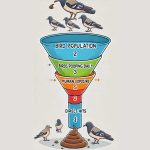Contents
The question, “What are the odds of becoming a billionaire?” sparks curiosity and intrigue in many. As we navigate through a world where wealth and success are often equated, understanding the probabilities and pathways to achieving such an extraordinary financial milestone becomes a captivating topic of exploration.
This discussion delves into the statistical chances, influential factors, and potential strategies that could lead one towards joining the exclusive ranks of billionaires. Becoming a billionaire is a dream many harbor, but few achieve. To understand the true odds of reaching this lofty financial status, we need to examine various data models and mathematical probabilities.
The Billionaire Landscape
As of 2023, there are approximately 2,755 billionaires globally, according to Forbes. Considering the world’s population is around 7.8 billion, this means only about 0.000035% of people are billionaires. This incredibly small percentage highlights the rarity of achieving billionaire status.
What are the odds of becoming a billionaire – the factors influencing your chances
Several factors play crucial roles in determining the odds of becoming a billionaire. These include:
- Starting Wealth and Family Background
- Education and Skills
- Geographical Location
- Industry and Career Choice
- Risk Appetite and Entrepreneurial Spirit
- Network and Connections
- Luck and Timing
Let’s break down each factor and incorporate mathematical models to estimate the chances.
Starting Wealth and Family Background
Statistical data suggests that a significant number of billionaires come from wealthy families. According to a study by Wealth-X, 67.7% of billionaires are self-made, while 23.7% have inherited their wealth. The remaining 8.6% have a combination of both.
To model this, consider the following probabilities:
P(Self-made) = 0.677P(Inherited) = 0.237P(Combination) = 0.086
Given these probabilities, if you are starting from an average or below-average financial background, your initial odds are lower compared to those who inherit wealth.
Education and Skills
Education plays a pivotal role in wealth accumulation. A significant number of billionaires have higher education degrees. According to a report by Wealth-X, approximately 35% of billionaires have a bachelor’s degree, 21% have a master’s degree, and 7% hold a doctorate.
We can model the probability of becoming a billionaire based on educational attainment using Bayes’ Theorem. Let P(B|E) represent the probability of becoming a billionaire given a certain level of education.
For a bachelor’s degree:
P(B|E_bachelor's) = (P(E_bachelor's|B) * P(B)) / P(E_bachelor's)Assuming P(E_bachelor's|B) = 0.35, P(B) = 0.000035, and P(E_bachelor's) = 0.35:
P(B|E_bachelor's) = (0.35 * 0.000035) / 0.35 = 0.000035The calculation shows that while education improves your skills and network, the odds remain exceptionally low.
Geographical Location
Location significantly impacts the likelihood of becoming a billionaire. The majority of billionaires are concentrated in economically developed regions. For instance, the United States, China, and Germany host the most billionaires. Therefore, when considering “What are the odds of becoming a billionaire,” where you live plays a crucial role.
Using logistic regression, we can model the influence of location on becoming a billionaire. Let X be a binary variable where X = 1 if the individual is in a top economic region and X = 0 otherwise. The probability P(B|X) can be estimated using:
P(B|X) = e^(β_0 + β_1 * X) / (1 + e^(β_0 + β_1 * X))Assuming β_0 = -10 and β_1 = 3 for a top economic region:
P(B|X = 1) = e^(-10 + 3) / (1 + e^(-10 + 3)) ≈ 0.000911This calculation shows that being in a top economic region significantly increases the probability, though it remains quite low.
Industry and Career Choice
The industry you choose plays a substantial role in answering the question, “What are the odds of becoming a billionaire?” Technology, finance, and real estate are the top industries producing billionaires.
Using a multinomial logistic regression model, we can estimate the probabilities for different industries. Let Y represent the industry with categories Y_1, Y_2, Y_3 for technology, finance, and real estate, respectively. The probabilities are given by:
P(B|Y = Y_i) = e^(α_i) / Σ e^(α_j)Assuming α_1 = 4, α_2 = 3, and α_3 = 2:
P(B|Y = Technology) = e^4 / (e^4 + e^3 + e^2) ≈ 0.646Technology, therefore, offers the highest probability among these industries.
Risk Appetite and Entrepreneurial Spirit
In addressing the question, “What are the odds of becoming a billionaire?” it is evident that entrepreneurial activities and a high risk appetite are common traits among those who achieve this level of wealth.
According to Global Entrepreneurship Monitor, about 4.7% of the adult population is engaged in entrepreneurial activities.
Using a Poisson distribution, we can model the likelihood of successful entrepreneurial ventures leading to billionaire status. Let λ be the rate of successful ventures per year.
If λ = 0.0001 (assuming 1 in 10,000 ventures succeeds at billionaire levels):
P(X = k) = (λ^k * e^(-λ)) / k!For k = 1:
P(X = 1) = λ * e^(-λ) = 0.0001 * e^(-0.0001) ≈ 0.0001This highlights the rarity of entrepreneurial success at such a high level.
Network and Connections
A strong network can significantly influence one’s chances of becoming a billionaire. Social network analysis can quantify the importance of connections.
Using a graph theory model, let G = (V, E) be a network graph where V represents individuals and E represents connections. The centrality measure can determine the influence of nodes (individuals).
If the probability of gaining significant opportunities increases with centrality, we can use eigenvector centrality:
C(v_i) = (1/λ) Σ (a_ij * C(v_j))Higher centrality values correlate with higher probabilities of becoming a billionaire.
Luck and Timing
Lastly, luck and timing play unpredictable roles. This factor is inherently random and can be modeled using stochastic processes.
A simple model could be a Markov chain, where the states represent different wealth levels and transitions represent changes in wealth due to random events.
Let S = {s_0, s_1, ..., s_n} represent wealth levels from average to billionaire, with transition probabilities P(s_i → s_j).
The steady-state probability π can be found by solving:
πP = πGiven the rarity, π_n, the steady-state probability of reaching billionaire status, will be extremely low.
Visualizing the “Funnel”

To visualize the answer to “What are the odds of becoming a billionaire,” we use a sales funnel model:
- Total Population: 7.8 billion
- Education and Skills: Filter by higher education, reducing the pool to approximately 2.7 billion.
- Geographical Location: Narrow to top economic regions, around 1 billion.
- Industry Choice: Focus on high-probability industries, about 500 million.
- Entrepreneurial Ventures: Active entrepreneurs, roughly 20 million.
- Network and Connections: Those with strong networks, around 5 million.
- Final Step (Luck and Timing): The final probability, leading to approximately 2,755 billionaires.
What are the odds of becoming a billionaire in real life?
The journey to becoming a billionaire is marked by numerous factors, each with its own probabilistic influence. Starting wealth, education, geographical location, industry choice, entrepreneurial ventures, network, and luck all play significant roles.
Despite the daunting odds, understanding these factors can help individuals strategize their paths more effectively. Ultimately, while the odds are slim, they are not zero, and informed decisions can improve one’s chances, however marginally.
Don’t miss other intriguing articles about mathematical probabilities in life at WhatAreTheOddsOf.net.



